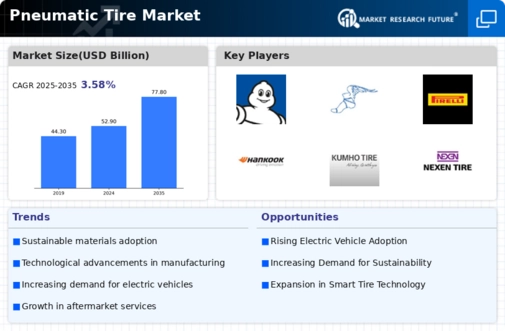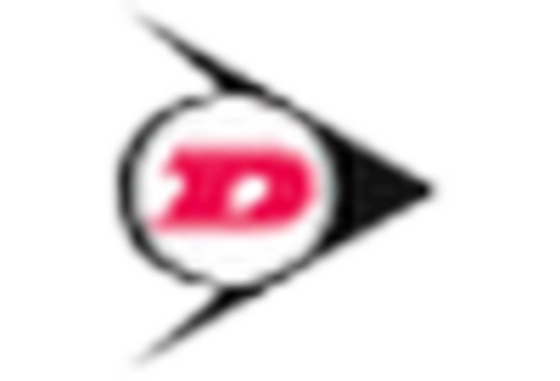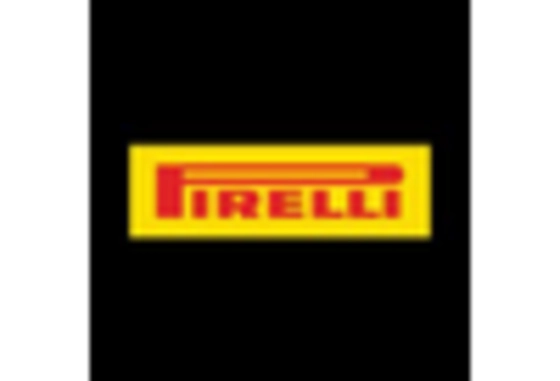Rising Vehicle Production
The increasing production of vehicles is a primary driver for the Pneumatic Tire Market. As automotive manufacturers ramp up their output to meet consumer demand, the need for tires, particularly pneumatic tires, escalates. In 2025, vehicle production is projected to reach approximately 90 million units, which could lead to a corresponding rise in tire demand. This trend is further supported by the growing popularity of electric vehicles, which often utilize specialized pneumatic tires designed for efficiency and performance. Consequently, the Pneumatic Tire Market is likely to experience substantial growth as manufacturers strive to keep pace with the burgeoning automotive sector.
Infrastructure Development
Infrastructure development plays a crucial role in propelling the Pneumatic Tire Market. As countries invest in road construction and maintenance, the demand for vehicles, and consequently tires, increases. In recent years, significant investments have been made in transportation infrastructure, with estimates suggesting that global spending on infrastructure could exceed 3 trillion USD by 2025. This surge in infrastructure projects not only enhances road quality but also encourages vehicle ownership, thereby driving the need for pneumatic tires. The Pneumatic Tire Market stands to benefit from this trend, as improved infrastructure facilitates smoother transportation and increases the lifespan of tires.
Expansion of E-commerce Platforms
The expansion of e-commerce platforms is transforming the way consumers purchase tires, thereby influencing the Pneumatic Tire Market. Online sales of tires have surged, with estimates indicating that e-commerce could account for over 20% of tire sales by 2025. This shift is driven by the convenience of online shopping and the ability to compare prices and products easily. Retailers are increasingly investing in their online presence, offering a wider range of pneumatic tires to cater to diverse consumer needs. Consequently, the Pneumatic Tire Market is likely to experience growth as e-commerce continues to reshape consumer purchasing behavior.
Growing Demand for High-Performance Tires
The demand for high-performance tires is steadily rising, significantly impacting the Pneumatic Tire Market. Consumers are increasingly seeking tires that offer enhanced safety, durability, and fuel efficiency. This trend is particularly evident in the premium tire segment, where sales are projected to grow at a compound annual growth rate of 5% through 2025. Manufacturers are responding by innovating and developing advanced pneumatic tires that incorporate cutting-edge materials and technologies. As a result, the Pneumatic Tire Market is likely to witness a shift towards high-performance products, catering to the evolving preferences of consumers who prioritize quality and performance.
Regulatory Standards and Safety Regulations
Regulatory standards and safety regulations are pivotal in shaping the Pneumatic Tire Market. Governments worldwide are implementing stringent regulations to enhance vehicle safety and environmental sustainability. For instance, tire labeling regulations that inform consumers about fuel efficiency and wet grip performance are becoming more prevalent. These regulations not only promote consumer awareness but also compel manufacturers to innovate and improve their products. As a result, the Pneumatic Tire Market is expected to adapt to these evolving standards, leading to the development of more efficient and safer pneumatic tires that meet regulatory requirements.

















Leave a Comment